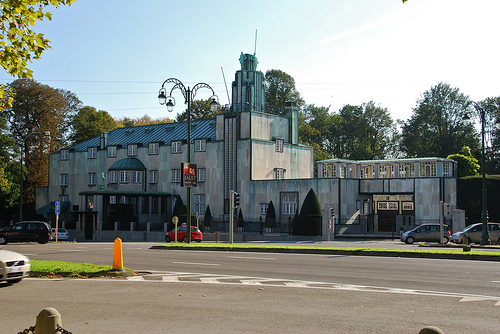Stoclet Palace really ventured into a new design space.
- Stoclet Palace is a private mansion considered a masterpiece of architecture, found in Belgium’s Brussels, in Europe and it features well landscaped gardens, paintings, artworks, mosaics and sculptures, and has marble as a primary building material.
- ‘Stoclet Palace’ is also known as ‘Stoclet House’, ‘Palais Stoclet’ in French and ‘Stocletpaleis’ in Dutch.
- Adolphe Stoclet, a Belgian art enthusiast and banker, commissioned the construction of Stoclet Palace as his private home, and building took place from 1905 to 1911.
- The architect of Stoclet Palace was Josef Hoffmann from Austria, who was given free reign in his design of the property, with an open budget and architectural opportunity.
- Stoclet Palace is considered a ‘Gesamtkunstwerk’, a German term meaning ‘total work of art’, of the Wiener Werkstätte company, translated as ‘Vienna Workshops’, and the project included the artists Koloman Moser, Gustav Klimt, Frantz Metzner, Richard Luksch, and Michael Powolny, and others.
Stocet Palace
Image courtesy of Stephane Mignon/Flickr
- As an Art Nouveau building, Stoclet Palace was intentionally designed differently to the typical styles of the time, and featured simple, geometrical block design that helped revolutionise architecture of the era.
- The UNESCO World Heritage Convention designated Stoclet Palace a World Heritage Site in 2009, partly due to it being the work of ‘human creative genius’.
- The area of the Stoclet Palace property is roughly 8600 square metres (10,285 square yards), which includes gardens, that were also carefully designed along with the mansion.
- In 2012, Stoclet Palace was owned by the granddaughters of Adolphe Stoclet, but not occupied by any, and as a private residence it has remained closed to the public throughout its history, and as of 2015, the property was still closed to visitors.
- Stoclet Palace was subject to a court battle, ending in 2011, when its owners could not agree on the property’s future, as most of the four heiresses (sisters) were keen to separate the contents from the building, and then sell them off, however, they were unsuccessful.
Bibliography:
Stoclet Palace, 2015, UNESCO World Heritage Convention, http://whc.unesco.org/en/list/1298
Stoclet Palace, 2015, Wikipedia, https://en.wikipedia.org/wiki/Stoclet_Palace
Wise M, An Enchanted House Becomes a Family’s Curse, 2012, The Wall Street Journal, http://www.wsj.com/articles/SB10001424052970204616504577172941334034970







